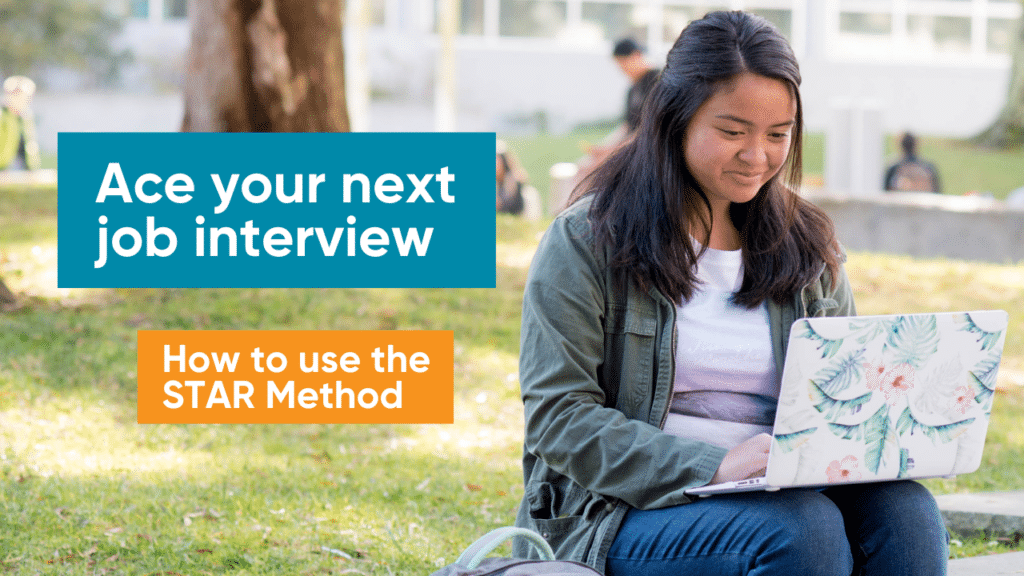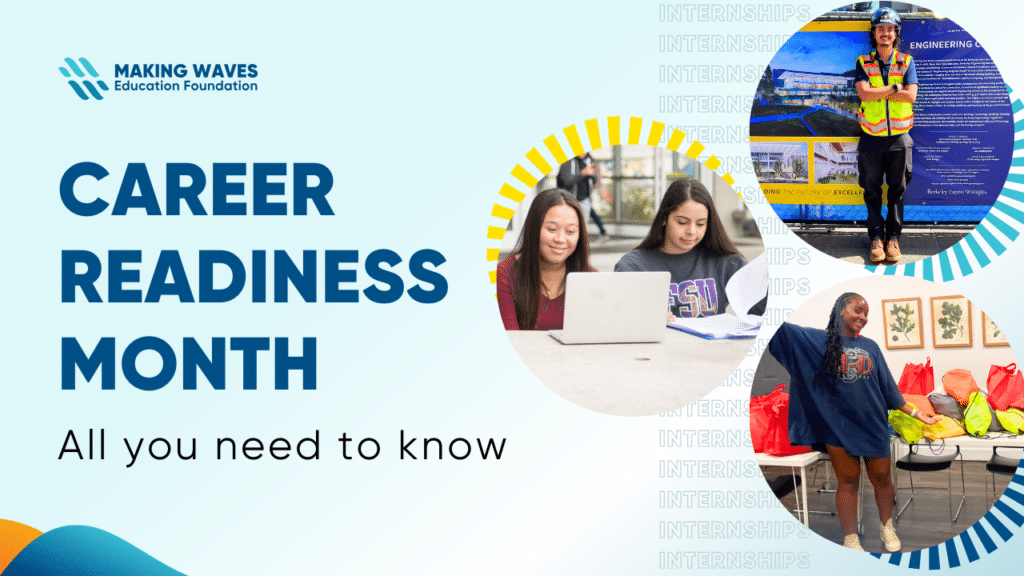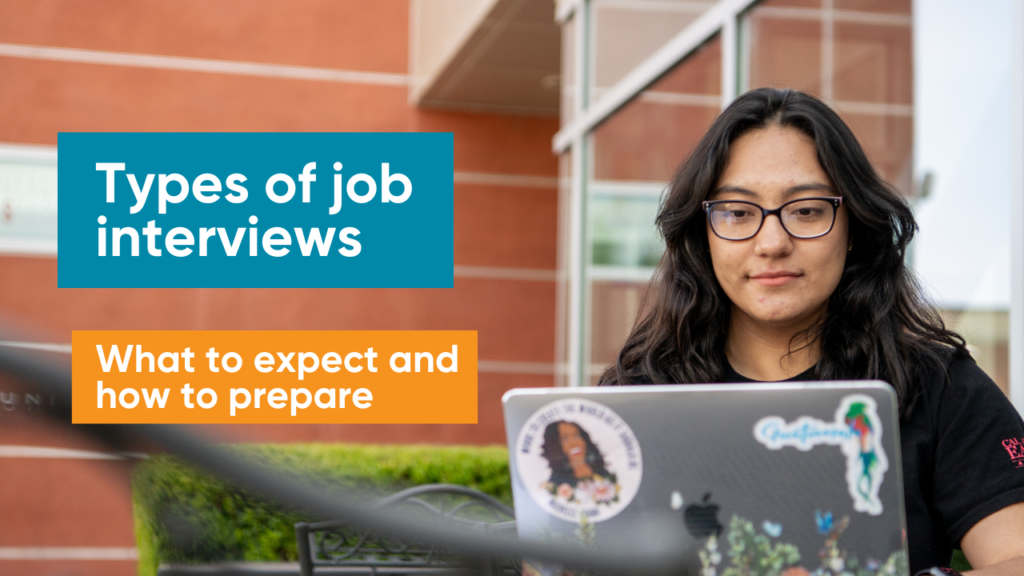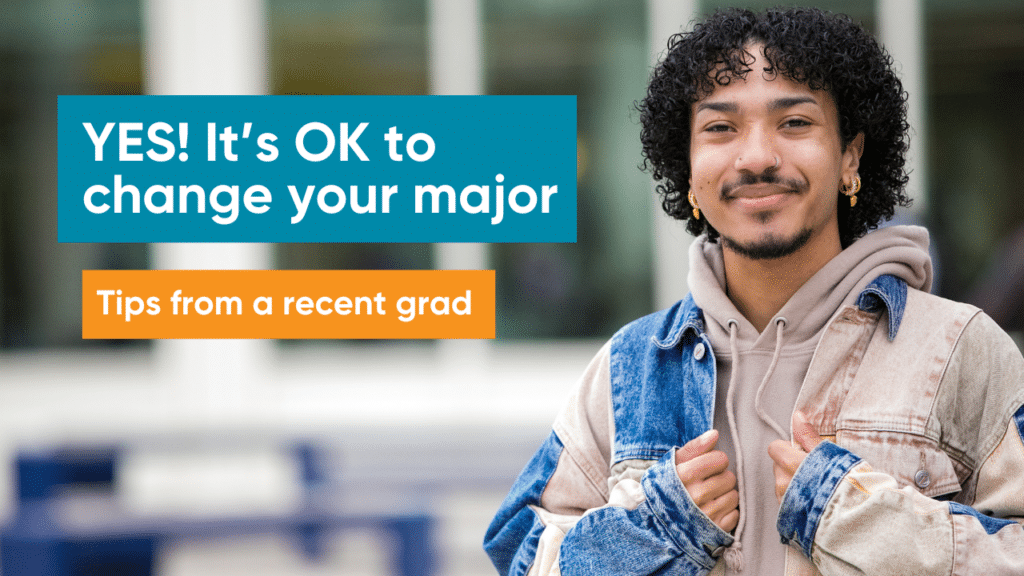
What is the STAR Method and how can it help with your job and internship interviews?
by Kaitlyn Endo
Ace your next job or internship interview using the STAR Method
What is the STAR method?
The STAR method is an interviewing tool or technique to help you answer interview questions that require you to recount a specific experience and tell a story. “STAR” is an acronym for Situation, Task, Action Result.
By using these four components to form your answer or anecdote when answering behavioral interview questions, it’s easier to focus your answer on a way that allows the interviewer to easily follow along. The STAR method is particularly useful because it gives you a framework to provide a straightforward, impactful answer.
How can you use the STAR method in your job and internship interviews?
Being familiar with the acronym is only the beginning – you should know how to use it, and practice.
Step 1: Situation – Briefly set the stage
Set the stage for your interviewer. When you’re nervous, it’s tempting to include all the details, but your interviewer doesn’t necessarily need those to get a clear picture of the situation you were in, so that they can understand the rest of your answer.
For example, if an interviewer asks you to tell them about a time you had a conflict with a coworker, you don’t necessarily need to share all the times the coworker bothered you leading up to the conflict. Of if your interviewer asks you to give an example of a time you worked on a team, you don’t need to include details about each individual team member.
The STAR method is meant to keep things simple. Focus on what’s most relevant to your story.
Step 2: Task – Describe what you were tasked with
This is the part of your answer that should incorporate what was being asked of you and the specifics of what you were responsible for in this scenario you’re describing. This isn’t to be confused with the “action” portion of the answer, which is more geared towards what you did.
Step 3: Action – Explain the actions you took
Now that your interviewer knows the situation and what was asked of you, it’s time to share what you did. Share what actions you took, steps that were taken, skills used, how you solved the problem, or addressed the situation.
Try to strike a balance between not being long winded, but also not sharing vague answers like, “I did some research…”, “I made adjustments…”, “I worked hard on it…” . This is your opportunity to showcase your contribution.
Step 4: Result – What was the outcome
The way to wrap up your answer is to end with the results – what was the outcome of your actions and the situation as a whole. It’s common for folks to skip over this last step, but it’s the most important part of the answer!
It’s important to remember that an interviewer wants to know what you did, how you did it, and why it mattered.
Including quantities, long-term effects, and lessons learned are all great to include in this part of your answer. The result should be framed in a positive light (otherwise you might not want to be telling this particular story); this doesn’t mean you can’t include the challenges you faced or that it wasn’t perfect, however you should try to end on a high note by including what you learned or steps you’ve since taken to improve.
How to prepare to use the STAR method in your job or internship interview
The best way to prepare to use the STAR method in an actual job or internship interview is to practice.
The more familiar you are with using it when answering questions that require a story, the more it will feel like muscle memory.
Here are some additional tips to help:
Be very familiar with the job description
- Think about the skills and experience that might be important for the role or employer. For example, if the role requires a lot of collaboration, think of specific examples of experience that showcase your collaboration skills. Use a T-chart to brainstorm which of your experiences and stories might align best with what they’re looking for.
Have a few strong, versatile example stories
- Though there’s no way to know ahead of time the exact questions an interviewer will ask, you can prepare a few stories about different types of experiences that you can adapt for various questions. For example, many interviewers ask about transferable skills (i.e., collaboration, communication, leadership), overcoming challenges, work style, etc.
Try the STAR method of other forms of storytelling
- The STAR method can be used for all kinds of storytelling, not just when answering interview questions. A great way to practice getting used to it is by incorporating it into your storytelling in everyday life like sharing an update with a friend or sharing an experience you had with your sibling.
Don’t rush
- If you’re struggling during the interview, it’s okay! Don’t be afraid to ask for a few seconds to think.
Example of the STAR method in action in interviews for job and internships
For additional clarity, here’s an example of the STAR method in action. If an interviewer were to ask, “tell me about a time you worked with a team on a project.”
A response might be:
Situation: “In my previous role as a volunteer program coordinator, much of my job was focused on maintaining external facing programs working closely with volunteers, corporate partners, etc.”
Task: “A new objective for my team was to build a mentor program for students we worked with to be matched with volunteer mentors. We were expected to create everything from end to end – a curriculum, outreach and recruitment strategy, resources, all of it.”
Action: “Since each team member had their own expertise in different elements of the project, we collectively decided to leverage each person’s skills and divided and conquered on identified deliverables. I took on a leadership role by starting a project plan and delegating tasks. I had the most experience working with external folks, so I offered to create the outreach and recruitment strategy for volunteers and any resources they might need for the program. After drafting materials, I requested feedback from our marketing team on outreach materials, and asked others in the organization that work with external folks to connect me with stakeholders they thought might be a good fit for the program.”
Result: “As a result, we were able to all contribute to building and launching a mentor program and piloted it with 25 participating students and volunteer mentors. Over the last three years the program has grown to 45 students and volunteer mentor pairs and is now an established program for the organization.”
Types of questions to answer using the STAR method in interviews
The STAR method can be used for any job or internship interview question that requires you to recount a situation and tell a story, provide a specific example or experience. This is common when answering behavioral interview questions.
(Behavioral interview questions are questions that ask a candidate to share examples or a specific situation they’ve encountered and how they handled them. The goal of these types of questions is to better understand how a candidate might behave in a work setting, and get a better sense of how they work)
These types of questions can be easily recognized by the way they open:
- Give me an example of…
- Tell me about a time when…
- What do you do when…
- How have you navigated…
- Describe a situation…
- Have you ever…
Give it a try!
Here are some common behavioral questions to test out the STAR method:
- What do you do when you have conflicting priorities? How did you navigate those situations?
- Describe a time you failed, and how you dealt with it.
- Give me an example of a time you had to work on a project or task with team members. What role do you typically take in a team setting?
- How have you navigated pressure at work or school?
- Tell me about your proudest accomplishment.
For more behavioral interview questions to practice with, check out 30 common behavioral interview questions by The Muse.
ABOUT MAKING WAVES Education FOUNDATION
At Making Waves, we are committed to educational equity. Making Waves Education Foundation is a Bay Area nonprofit that supports Making Waves Academy – a public charter school with more than 1,100 5th through 12th grade students – and leads college and career programming with more than 430 college students.
Knowing the opportunities that come with a college degree, we partner with historically underrepresented and underserved students to help make college affordable and graduation attainable. Centering the journeys of our students, our personalized approach includes college and career coaching, scholarships, and financial planning.
Our alumni network includes more than 730 college graduates, who earn their degrees and land jobs at more than twice the rate of their first-generation, low-income peers, with 85% graduating debt-free.



